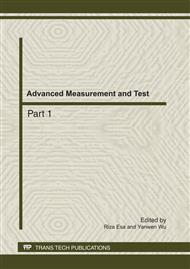p.1438
p.1444
p.1448
p.1452
p.1458
p.1464
p.1471
p.1477
p.1482
Analysis Methods of Power Characteristics for Hydraulic Pressing of the Traction Drive Device
Abstract:
Analysis Methods of Power characteristics for hydraulic pressing of the traction drive device are studied. The operating principle of hydraulic pressing of the traction drive device is analyzed, Probe into the rule of variation of the inner and outer Friction Pairs about the traction coefficient and the transmission ratio, A mathematical model of transmission traction characteristics is built up based of the Elasto-hydrodynamic lubrication theory, to explore the power characteristics of the friction pairs under different slip roll ratio and normal loading force, and the transmission of the input power and output power under different total sliding rate and loading force. The results showed that the transmission power of hydraulic pressing of the traction drive device is increasing when the normal loading force is increasing under some sliding Rate, but the transmission power tend to stable when the shearing stress is close to limiting shearing stress;and with the Sliding Rate increasing the transmission power increase under some normal loading force, but the transmission power eventually tend to stable when the Shearing Stress is close to limiting shearing stress.
Info:
Periodical:
Pages:
1458-1463
Citation:
Online since:
July 2011
Authors:
Price:
Сopyright:
© 2011 Trans Tech Publications Ltd. All Rights Reserved
Share:
Citation:


